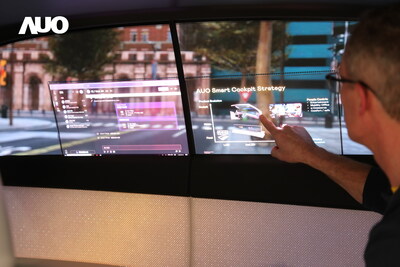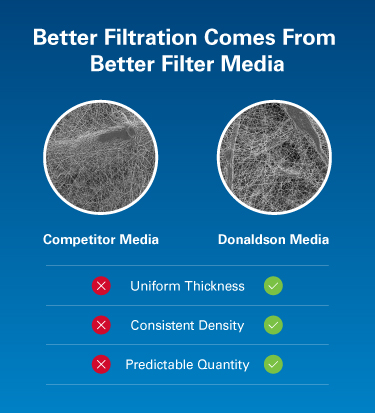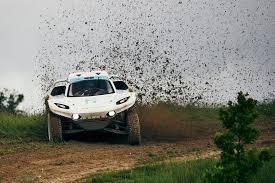

Stricter emission regulations around the world are testing the capabilities and creativity of development engineers and designers.
One of the leaders in design, simulation and testing is German firm DIF – Die Ideenfabrik GmbH (the ideas factory). The company’s focus is on the design and development of combustion engines, emission reduction and power-train systems. It provides a range of engineering services, which starts from developing the idea, taking it to the concept phase, and then to prototyping and handover into series production. DIF uses the latest simulation, engineering and testing techniques.
The key activities are concept and product development, analysis/simulation, 3D & 2D design, quality management engineering, production engineering, power train integration and field engineering. Together with different partners, such as EMITEC (in the case of the emission reduction systems), innovative turn-key solutions for the future are delivered.
DIF was earlier known as makon Engineering. In 2009, the company changed its name to DIF. makon had 30-years of experience in developing assembly lines, special purpose machinery, plant equipment, as well as automation systems in South Germany. The company was taken over by Bernd Danckert in mid-2007, and renamed DIF Die Ideenfabrik GmbH in 2009. It is building a new test center in Friedrichshafen on the Lake of Constance in Southern Germany.
The center will focus on power trains – engine and transmission – and emission reduction solutions for industrial combustion engines for ships, railway locomotives, trucks and special vehicles. Once completed, it will have five fully equipped test benches up to 2MW for complete power train systems. There are plans to increase this number to 10 in the future.
Automotive Industries (AI) asked Bernd Danckert, chairman and CEO of DIF to tell us about the after-treatment or post-combustion devices the company is working on.
Danckert: DIF is currently working with EMITEC on SCR systems to reduce nitrogen oxides in the exhaust gas of industrial diesel engines. These systems are individually adapted to our customer’s needs, and have an optimum efficiency for the individual installations. DIF is using trend-setting SCR system components from EMITEC (EMITEC NoNOx technology in combination with EMITEC metal SCR catalysts). We can adapt this technology at a reasonable price to the cramped engine room conditions of special vehicles such as leisure yachts.
For applications where particle reduction is needed, DIF supplies SCR systems in combination with diesel particulate filter systems. For active regeneration systems we normally prefer HC dosing units together with oxidation catalysts – but also passive regenerated partial flow filters (such as EMITEC PM-Metalit) can be excellently integrated into SCR systems – it depends on the customer’s and the legal requirements. For modern diesel engines with power ratings above 560kW especially for off-highway applications SCR technology is sufficient and preferred.
AI: You are integrating complete power trains as well?
Danckert: DIF recommends the best layout for the engine when a power train is being integrated into a vehicle. We normally start with a complex product analysis, and select the optimum overall system for the special application like engine, propulsion and after treatment system for the vehicle. If needed, DIF will optimize and re-engineer the power train. Today’s power trains run with partially oversized engines. Therefore, one of the first jobs is normally a down-sizing. This reduces the weight of the powertrain and therefore improves fuel efficiency. There are benefits on the emission side as well, as both engine and exhaust temperatures are higher.
AI: What is your normal method of operation?
Danckert: We start by analyzing the customer’s product, or – if the product is still under development – a comparable model that is already available. Using these results, we can select the optimum parts for the power train. We sometimes also optimize or reengineer some parts in order to get the best compromise in every part: performance, economy and ecology. We prefer SCR systems for heavy, expensive industrial diesel engines. It makes them far more fuel efficient and robust. In many cases, we can do without the particulate trap – which lowers the back pressure and increases the reliability of the system.
AI: What about exhaust gas recirculation systems?
Danckert: We believe that a low PM combustion process can be realized with pure internal exhaust gas recirculation for engines with 560 kW and above to reach US EPA Tier 4 emission limits. When it comes to engines with power ratings below 560kW, an external EGR system might eventually be necessary with moderate EGR rates for high dynamic requirements. This is to put the NOx engine out emissions towards 4 g/kWh. NOx values are further reduced in a SCR system with ~90% conversion rate to comply with Tier 4 limits. Our goal is to have simple engines with high pressure injection, optimized turbo charging and – if possible – without an EGR system for better reliability.
AI: How has DIF helped OEMs meet the NOx control schemes under the US EPA 2010 limits?
Danckert: DIF helped marine and construction equipment manufacturers to meet US EPA 2010 limits through the development of a wide range of highly efficient SCR after-treatment systems, which are affordable for, e.g. single yacht owners. These projects often started by considering and correcting the inner engine emissions before finally developing the appropriate SCR system. DIF sets a high value on fully exploiting the available opportunities for optimizing the combustion processes.
AI: What is the future of diesel emissions control?
Danckert: The future of diesel emission control should be based on SCR systems that allow fuel efficient engines with a modern combustion process based on high injection pressures and optimum turbo charging in order to provide the necessary amount of oxygen. This offers some potential for lowering the CO2 emissions.
For special applications, ammonia instead of DEF might be possible, since the systems are more efficient regarding the volume to evaporate in the exhaust system and to store ammonia water solution on board the vehicle.
AI: What are you working on at present?
Danckert: We are developing airless SCR systems with DEF nozzles that inject a fine spray in the inner part of the exhaust line. Besides this, we are working on systems for thermo management within the exhaust line – especially for marine applications in order to get higher after-treatment efficiencies especially in the sector where diesel particulate filters can be avoided. Much work is spent on innovative SCR dosing configurations that lead to higher conversion rates of 95% and higher. These techniques are currently in the development process.
Beside these techniques, we are currently developing a new design method in cooperation with the University of Stuttgart. We are developing a so-called design language for the computer-supported development of exhaust after-treatment systems, for realizing far lower turn-over times in the development cycles and therefore a real competitive advantage. We believe that innovative development tools made by their potential users, used and back-checked day by day at work give us a great advantage for complex system engineering in future power-train systems including the after treatment and the necessary components. Our special capabilities in design analysis and testing gives DIF a great advantage for the huge challenges, particularly in the area of special on/off highway and marine vehicles with their high complexity and hundreds of different variants, which will soon need to comply with new emission legislation.














More Stories
Maximise Margins with Proven PPF Tactics
Lakshmi Prasad Bhatta on the quest for zero road deaths
Flexible Magna Manufacturing Solutions: The Key to Success in the Automotive Industry